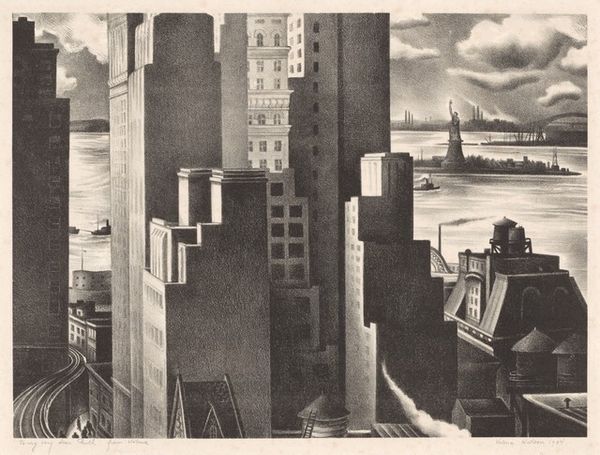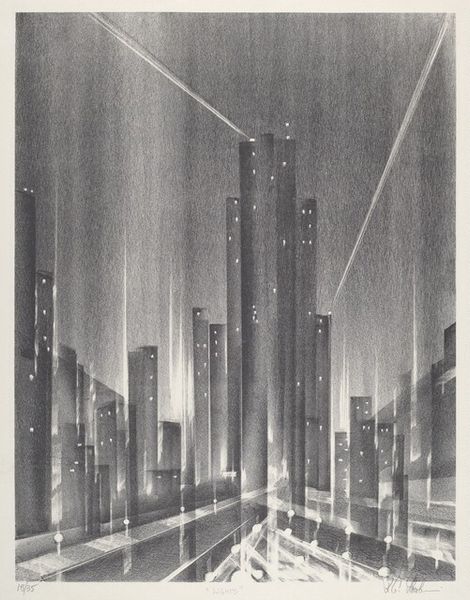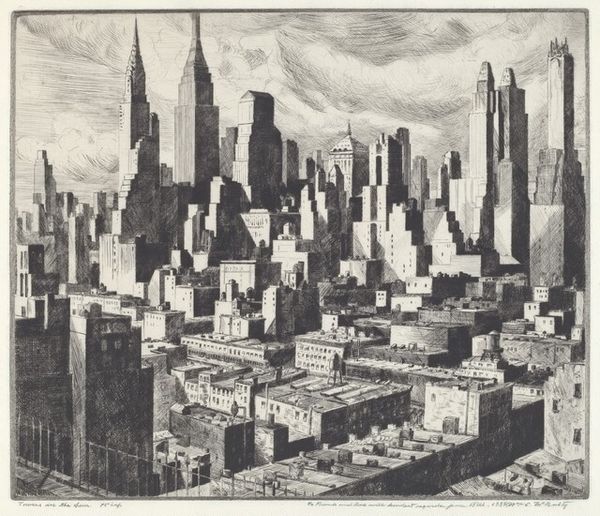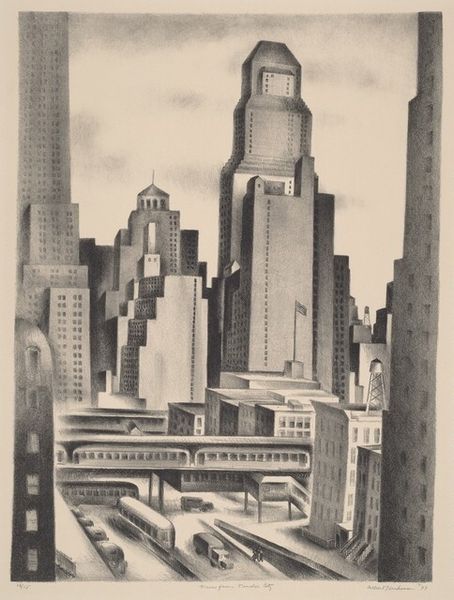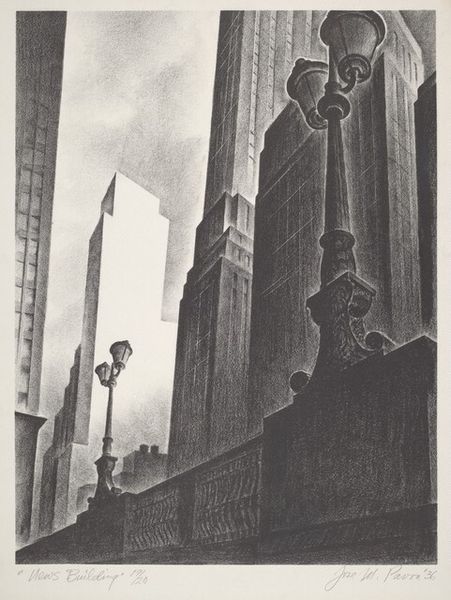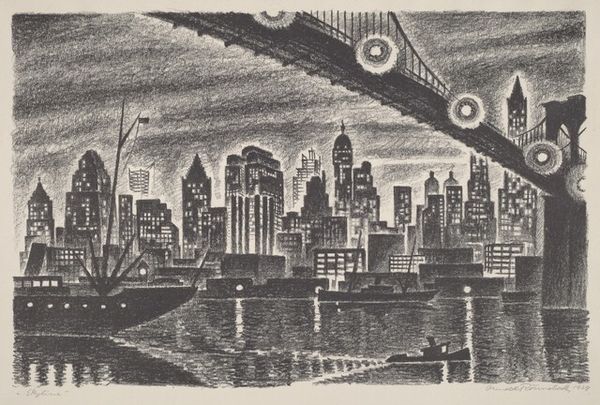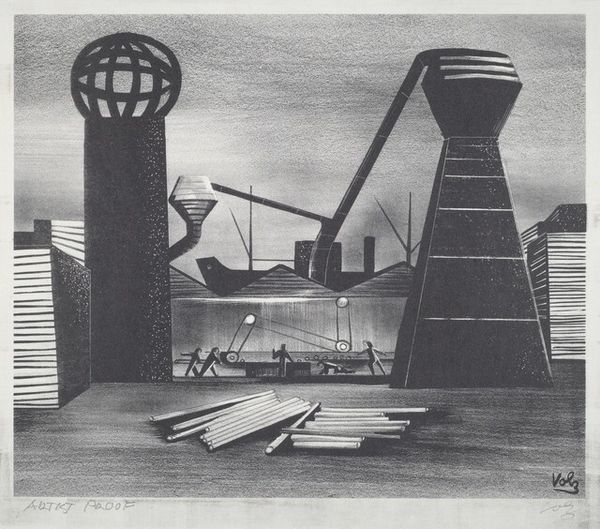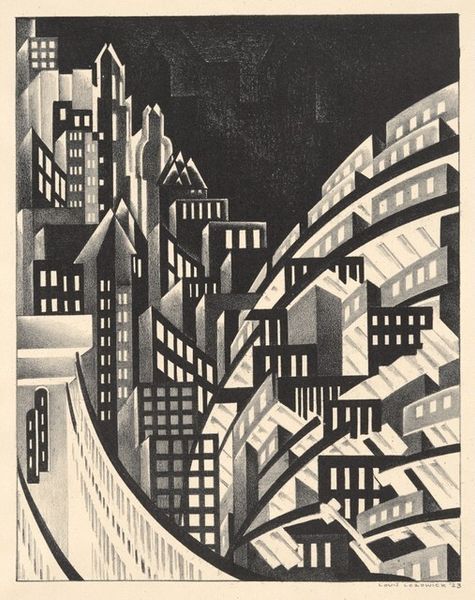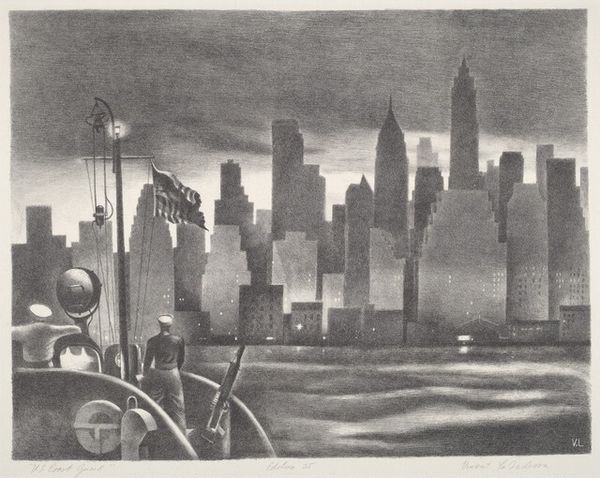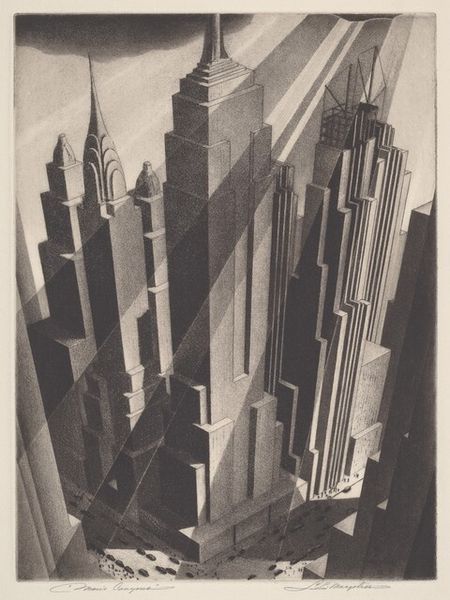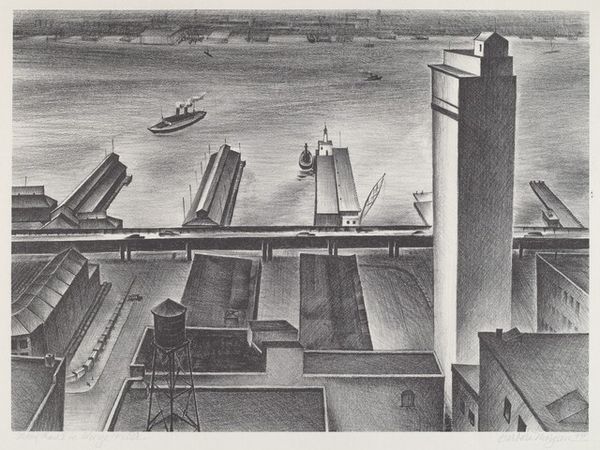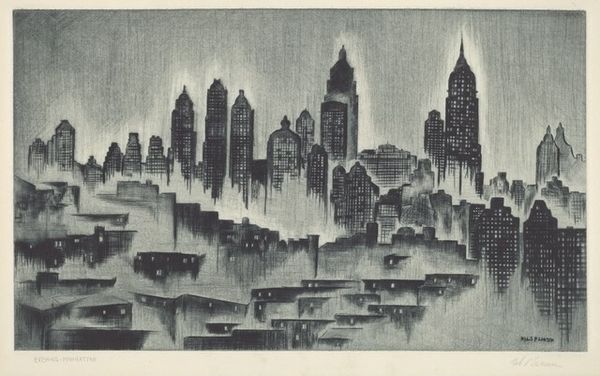
print, graphite
#
art-deco
# print
#
graphite
#
cityscape
#
realism
Dimensions: image: 356 x 254 mm paper: 559 x 406 mm
Copyright: National Gallery of Art: CC0 1.0
Curator: Immediately striking, isn't it? I'm drawn to the stark contrast between the buildings and the moody sky. Editor: It certainly sets a tone. We're looking at Stefan Hirsch's "Untitled (New York City)" from 1932, a graphite print. There's a real tension in the way the sharp geometries of the skyscrapers meet this more diffuse atmosphere. It feels like a city on the edge. Curator: That liminal space, that threshold – so powerful here! Light emanating from windows is more than just illumination. It's like scores of individual hopes and lives within this one behemoth structure, pushing back against encroaching darkness. Editor: I'm struck by how this print aligns with Depression-era anxieties, presenting urban architecture not as triumphant modernity, but something perhaps more unsettling. The strong verticals almost feel prison-like, or perhaps tombstones. Curator: Perhaps less tombstone, more totem. Note that despite the dominating skyline, Hirsch includes a grounded ship mast that creates a vertical and a foreground that also alludes to navigation, aspiration, and potential for voyage and adventure. These were deeply embedded motifs of early American commerce, the connection of sea and port cities, thus the print speaks also about perseverance during times of uncertainty. Editor: That interplay, as you put it, offers a glimmer. It underscores how deeply ambivalent that period must have been. There’s a realism to it, clearly reflecting its moment, but almost edging into the art deco with those stylized highlights. Curator: You see, to me, it is how that memory manifests, through shared visual shorthands, during periods of massive social and technological upheaval. Hirsch invites viewers to both recognize a period and also their power, within the print, to rise beyond circumstances. Editor: Yes. By presenting this vista in graphite, he’s using a distinctly industrial medium to capture what industrialization wrought upon the social landscape. It reflects our world back to us, changed and charged. Thanks for pointing that out! Curator: It’s a pleasure. This work invites us to view beyond a concrete reality. There’s magic, too, in the ways symbols survive.
Comments
No comments
Be the first to comment and join the conversation on the ultimate creative platform.
